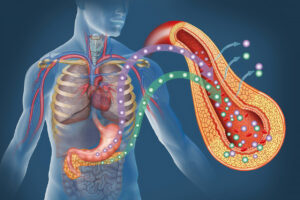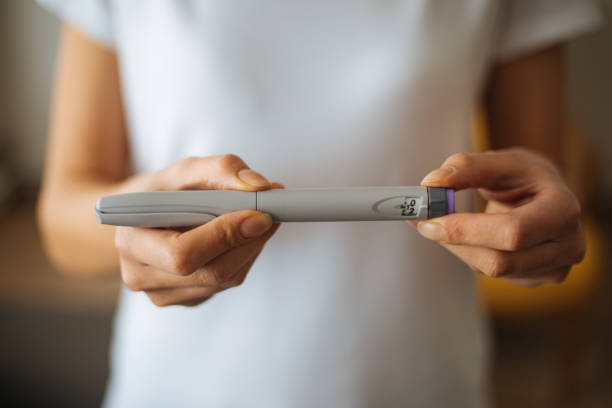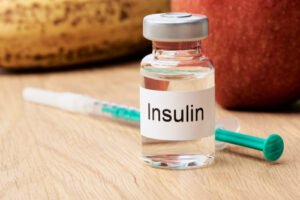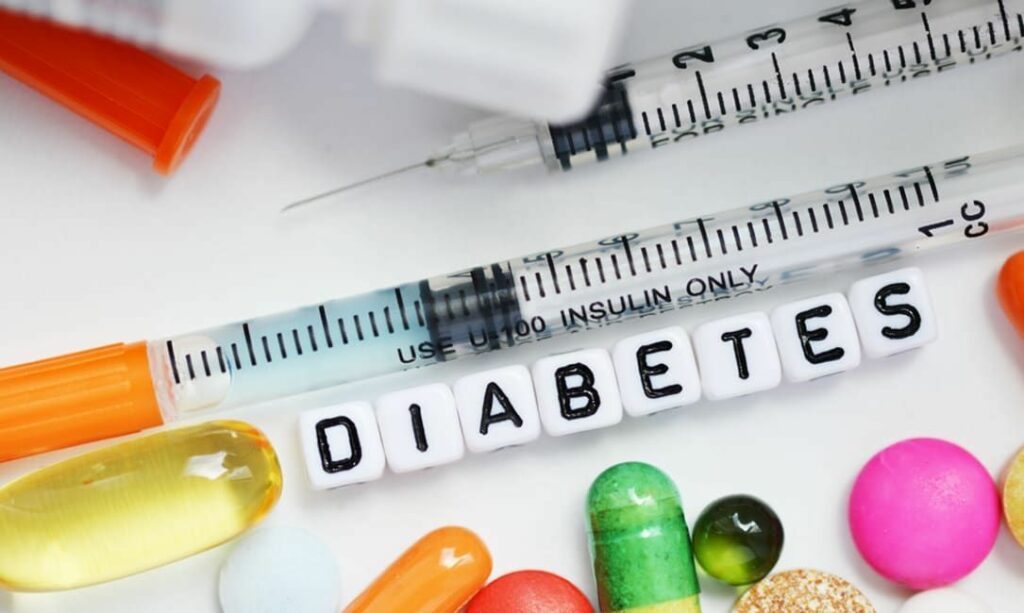Type 2 diabetes is a chronic condition that affects millions of people worldwide. While lifestyle changes, oral medications, and insulin therapy are common approaches to managing this condition, there is a growing category of medications administered through injections that have become pivotal in diabetes management. In this blog post, we will explore the realm of Type 2 diabetes injectable medications, shedding light on their types, mechanisms of action, benefits, and considerations for individuals living with diabetes.
Contents
Understanding Type 2 Diabetes

Type 2 diabetes is a prevalent and chronic metabolic disorder characterized by insulin resistance and insufficient insulin production. It affects the way the body processes glucose (sugar), leading to elevated blood sugar levels. This condition, often associated with lifestyle factors, genetics, and obesity, requires careful management to prevent complications and enhance the quality of life for individuals living with diabetes.
- Insulin and Glucose Regulation:
- Insulin Production and Function: The pancreas, an organ located behind the stomach, produces insulin. Insulin plays a crucial role in regulating blood sugar by allowing cells to absorb glucose, which is then used for energy.
- Insulin Resistance: In Type 2 diabetes, cells become resistant to the effects of insulin. This means that even though the pancreas produces insulin, the body’s cells do not respond effectively, leading to an accumulation of glucose in the bloodstream.
The Role of Injectable Medications
The role of injectable medications in the management of Type 2 diabetes is crucial for individuals who may not achieve adequate blood sugar control through other means. Here, we outline the key points regarding the role of injectable medications:
- Complementary Approach: Injectable medications are often prescribed when lifestyle modifications and oral medications are insufficient in achieving target blood sugar levels.
- Insulin Sensitivity Enhancement: GLP-1 receptor agonists, such as exenatide and liraglutide, work by mimicking the action of GLP-1, enhancing insulin sensitivity. This helps cells respond more effectively to insulin.
- Glucose Regulation: DPP-4 inhibitors, like sitagliptin and saxagliptin, play a role in glucose regulation by inhibiting the DPP-4 enzyme. Furthermore, this action increases the levels of incretin hormones, stimulating insulin release and inhibiting glucagon.
- Minimizing Glucose Production: Injectable medications, especially GLP-1 receptor agonists, can help reduce glucose production in the liver, addressing a key aspect of insulin resistance.
- Weight Management: GLP-1 receptor agonists are associated with weight loss in some individuals. This can be particularly beneficial for those with Type 2 diabetes who may also struggle with obesity.
- Reduced Risk of Hypoglycemia: Unlike some other diabetes medications, injectable medications such as GLP-1 receptor agonists and DPP-4 inhibitors carry a lower risk of hypoglycemia, making them suitable for certain patient populations.
- Flexible Administration: GLP-1 receptor agonists are typically administered once a day or once a week, providing flexibility in the treatment regimen. This can enhance adherence to the prescribed therapy.
Types of Type 2 Diabetes Injectable Medications

Type 2 diabetes injectable medications have become integral in the management of this chronic condition, offering effective alternatives when oral medications and lifestyle changes alone are insufficient. Let’s explore three primary classes of injectable medications: Glucagon-Like Peptide-1 (GLP-1) Receptor Agonists, Dipeptidyl Peptidase-4 (DPP-4) Inhibitors, and Insulin.
Glucagon-Like Peptide-1 (GLP-1) Receptor Agonists:
GLP-1 receptor agonists are a class of injectable medications that mimic the action of the naturally occurring hormone GLP-1. This hormone plays a crucial role in glucose homeostasis by stimulating insulin release, reducing glucagon secretion, and slowing down gastric emptying.
Examples:
- Exenatide
- Liraglutide
- Dulaglutide
Mechanism of Action: GLP-1 receptor agonists bind to the GLP-1 receptor on pancreatic beta cells, promoting insulin release in a glucose-dependent manner. They also suppress glucagon secretion, preventing the liver from releasing excess glucose. Additionally, these medications reduce appetite and slow down the absorption of glucose from the gastrointestinal tract.
Administration: GLP-1 receptor agonists are typically administered via subcutaneous injection. Furthermore, depending on the specific medication, they may be taken once daily or once weekly.
Dipeptidyl Peptidase-4 (DPP-4) Inhibitors
DPP-4 inhibitors are oral medications that increase the levels of incretin hormones, including GLP-1, by inhibiting the DPP-4 enzyme. However, one medication in this class, Saxagliptin, is available as an injectable formulation.
Examples:
- Sitagliptin
- Saxagliptin (available in both oral and injectable forms)
- Linagliptin
Mechanism of Action: DPP-4 inhibitors work by blocking the DPP-4 enzyme, which usually degrades incretin hormones. By preserving incretins, these medications enhance insulin release and reduce glucagon secretion, contributing to improved blood sugar control.
Administration: While most DPP-4 inhibitors are available in oral form, Saxagliptin can be administered as an injectable medication.
Insulin

Insulin is a hormone that regulates blood sugar by facilitating the uptake of glucose into cells. Injectable insulin is a mainstay in the treatment of Type 2 diabetes when other medications are not sufficient to control blood sugar levels.
Examples:
- Insulin glargine
- Insulin detemir
- Insulin degludec
Mechanism of Action: Insulin supplements the body’s natural insulin production, helping cells absorb glucose and lowering blood sugar levels.
Administration: Insulin is administered via subcutaneous injection. Furthermore, the frequency and type of insulin depend on individual needs and treatment goals.
Considerations for Type 2 Diabetes Injectable Medications

When it comes to managing Type 2 diabetes, the introduction of injectable medications represents a significant stride forward in the quest for effective treatment. However, before delving into the world of injectables, there are several crucial considerations to keep in mind. Let’s explore these considerations without diving into specifics for each medication.
- Individualized Treatment Plans: The landscape of Type 2 diabetes is diverse, and what works for one person may not be the best fit for another. Healthcare providers recognize the importance of tailoring treatment plans to the individual, considering factors such as lifestyle, preferences, and overall health.
- Adherence and Convenience: Adherence to medication regimens is a cornerstone of successful diabetes management. Injectable medications vary in terms of dosing frequency, and considerations such as ease of administration and flexibility play a pivotal role in ensuring consistent adherence.
- Impact on Lifestyle: Managing Type 2 diabetes is not just about medications; it’s a lifestyle journey. Injectable medications should seamlessly integrate into daily routines, considering factors such as work schedules, social engagements, and travel commitments. The impact on quality of life and daily functioning is a key consideration.
- Cost and Insurance Coverage: The financial aspect of diabetes management cannot be overlooked. Injectable medications can be more expensive than oral alternatives, and individuals need to explore insurance coverage, copay assistance programs, or patient assistance programs to manage costs effectively.
- Potential Side Effects: Like any medication, injectables may come with potential side effects. It’s crucial to have open and transparent communication with healthcare providers to understand the possible risks and benefits. Monitoring for side effects and reporting any concerns promptly is essential for ongoing safety.
- Complementary Therapies: Injectable medications are often part of a comprehensive treatment approach. Furthermore, they may be used in combination with oral medications, dietary changes, and exercise regimens. Understanding how injectables fit into the broader treatment plan is vital for achieving optimal glycemic control.
- Cardiovascular and Renal Health: Considerations regarding cardiovascular and renal health are increasingly important in diabetes management. Some injectable medications may offer additional benefits beyond glucose control, contributing to overall cardiovascular and renal health. This holistic approach is particularly relevant for individuals with comorbidities.
- Patient Education: Knowledge is empowerment, especially in diabetes management. Patient education is a key consideration, ensuring that individuals understand the purpose of injectable medications, how to administer them correctly, and what to expect in terms of results and potential side effects.
Conclusion
Type 2 diabetes injectable medications have become valuable tools in the management of this chronic condition. As medical advancements continue, individuals with diabetes have more options for achieving optimal blood sugar control. Healthcare providers must work collaboratively with patients, considering individual needs, preferences, and lifestyle factors to develop comprehensive and effective treatment plans. Regular monitoring and communication are key to ensuring the success of injectable medications in the management of Type 2 diabetes.
Do you want to get rid of diabetes? Join our online diabetes treatment program and reverse Diabetes naturally through lifestyle changes such as a Personalized Diet plan, Exercise, Yoga, dieticians, and health coaches.

